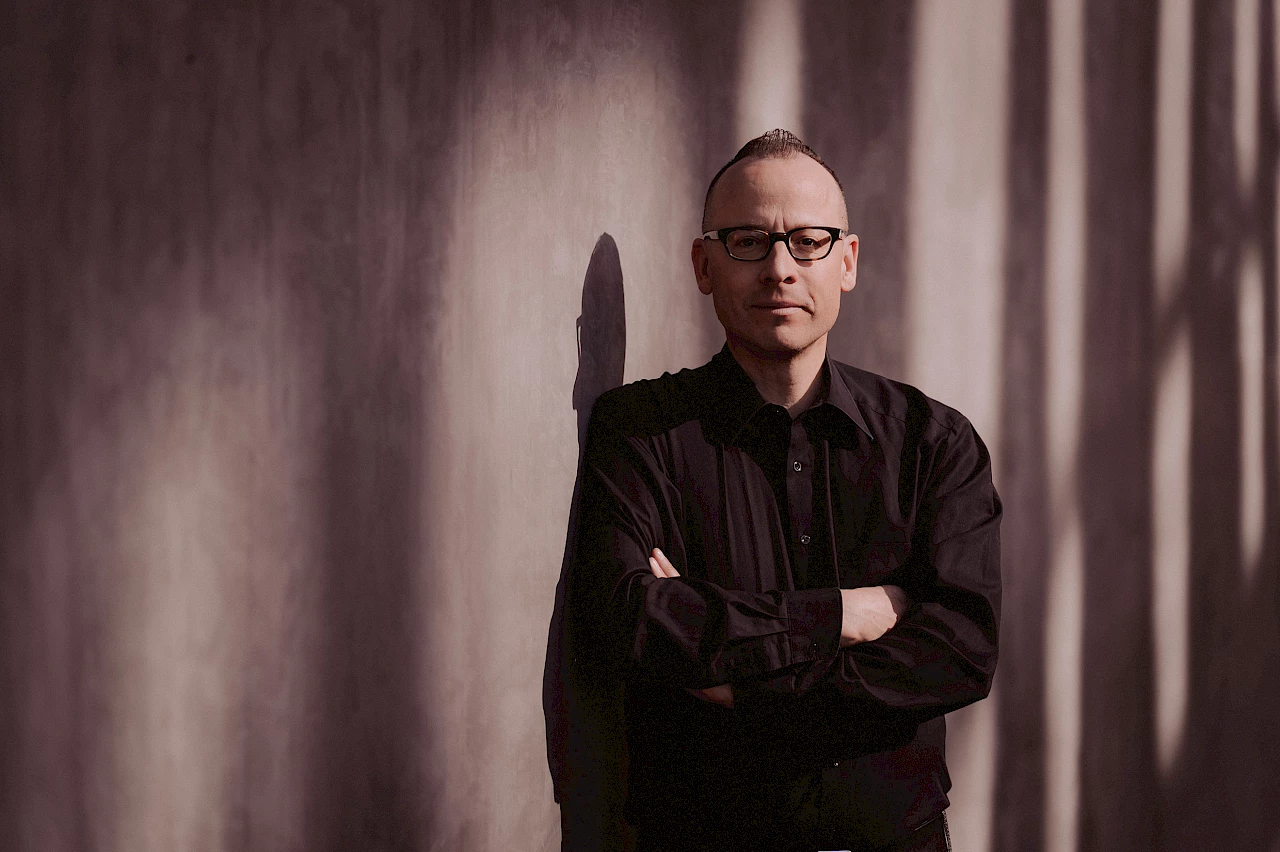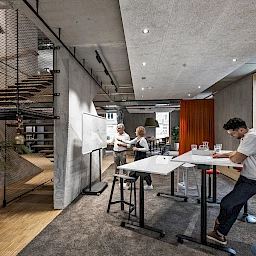What does the design of workspaces have to do with the future viability of a company? A lot, says Tobias Baur, a management consultant for spatial and organizational change. In an interview with the IBA Forum editorial team, he explains why space is more than just architecture, how it can support strategic change and why without cultural coherence everything remains just a façade.
Mr Baur, you say that spatial transformation is much more than interior design. What exactly does this mean?
When we talk about spatial transformation, it’s not primarily about furniture, colours or floor plans. It is about a deeper understanding of the effect that spaces have on people and organizations. Space can be a strategic tool to support and even accelerate change in organizations. Interior design is an important craft, but it often falls short if it is not embedded in an overarching understanding of a company’s identity, culture and goals. As I often say: Only when you know who you are and where you want to go can you even begin to conceive, model and design space and rooms in a meaningful way. Spaces that not only look good, but also have a real impact—for collaboration, culture and ultimately also economic goals.
To what extent can the design of working environments help to more clearly anchor a company’s strategic direction?
If a company knows its strategic direction, it can deduce how people should work together—and this in turn influences the spatial design. To take one example, a company in the fashion industry wanted to significantly shorten its time-to-market. The analysis showed that the problem lay less in the processes than in the lack of communication. The way the departments operated was too isolated, because the employees hardly ever met one another. The solution therefore consisted not only of process optimization, but also of spatial proximity, meeting areas, open communication and fewer doors for more exchange. In this way, obstacles were removed and the space became an instrument to support the strategic goal.
What role does the physical environment play in cultural change, for example with regard to agility, trust or collaboration?
A major one. Spaces are always an expression of the corporate culture. When I visit an organization and see large posters in the corridor professing values such as “we meet on equal terms” or “trust is our foundation” and then walk through rooms that are designed for control, compartmentalization and silo structures, it doesn’t fit together. The space contradicts the message. People notice this dissonance immediately. Trust is not created by posters, but by experience. The space therefore plays an important role. Trust, agility and collaboration require a space that enables openness, transparency and encounters. Otherwise, cultural change will remain an empty promise. You can immediately sense whether a space suits an organization or not, whether it is coherent or looks contrived.
Transformation is often understood in purely organizational terms. How can the spatial dimension be included on an equal footing.
By thinking holistically from the very beginning. Transformation is not an isolated IT or HR process, but affects all levels: management, organization, technology and space. Ideally, all the relevant stakeholders should sit down together and develop a common vision: How do we want to work? What culture are we striving for? What structures do we need for this? And how can spaces support this? Unfortunately, the space is often only considered at a late stage—according to the motto “Oh yes, we need something there too”—or merely treated as an operational measure. When applied correctly, the spatial dimension can have an enormous leverage effect—if it is integrated at an early stage.
Do you have an example where the spatial transformation has significantly supported the achievement of objectives?
Yes, one very impressive example was a globally active mobility company in which many highly specialized experts worked—each on their own and hardly ever in communication. The company wanted to increase its innovative strength and become faster. It therefore needed more cooperation, dialogue and genuine knowledge transfer. The rooms were remodelled in such a way that the employees were able to meet each other informally. Open zones, workshop areas and informal meeting points were deliberately created. There was a lot of scepticism at first. One team leader was downright furious about the change. A year later, he said, “I would never have thought that the lone wolves here would turn into a real team that develops rapidly from idea to idea.” That was a great compliment and proof of the influence that spaces have on behaviour and culture.
You often talk about coherence. Exactly what do you mean by that in the context of spaces?
Coherence means that what a company claims to be matches what you experience on the premises. If there is a gap, people feel it immediately. This can have a demotivating effect because it does not appear authentic and sometimes even becomes cynical. On the other hand, when you enter spaces and immediately have the feeling that “this suits them”, it sends a strong cultural signal both internally and externally. It has a positive influence on identification, commitment and ultimately also on attractiveness as an employer.
What do you wish for when companies are considering spaces?
More courage, a more holistic approach and more trust in the power of space. Space is not just there. It influences how we think, work and interact with one another. People who recognize this can use it purposefully as a motor for change.
Thank you for talking with us, Mr Baur.







